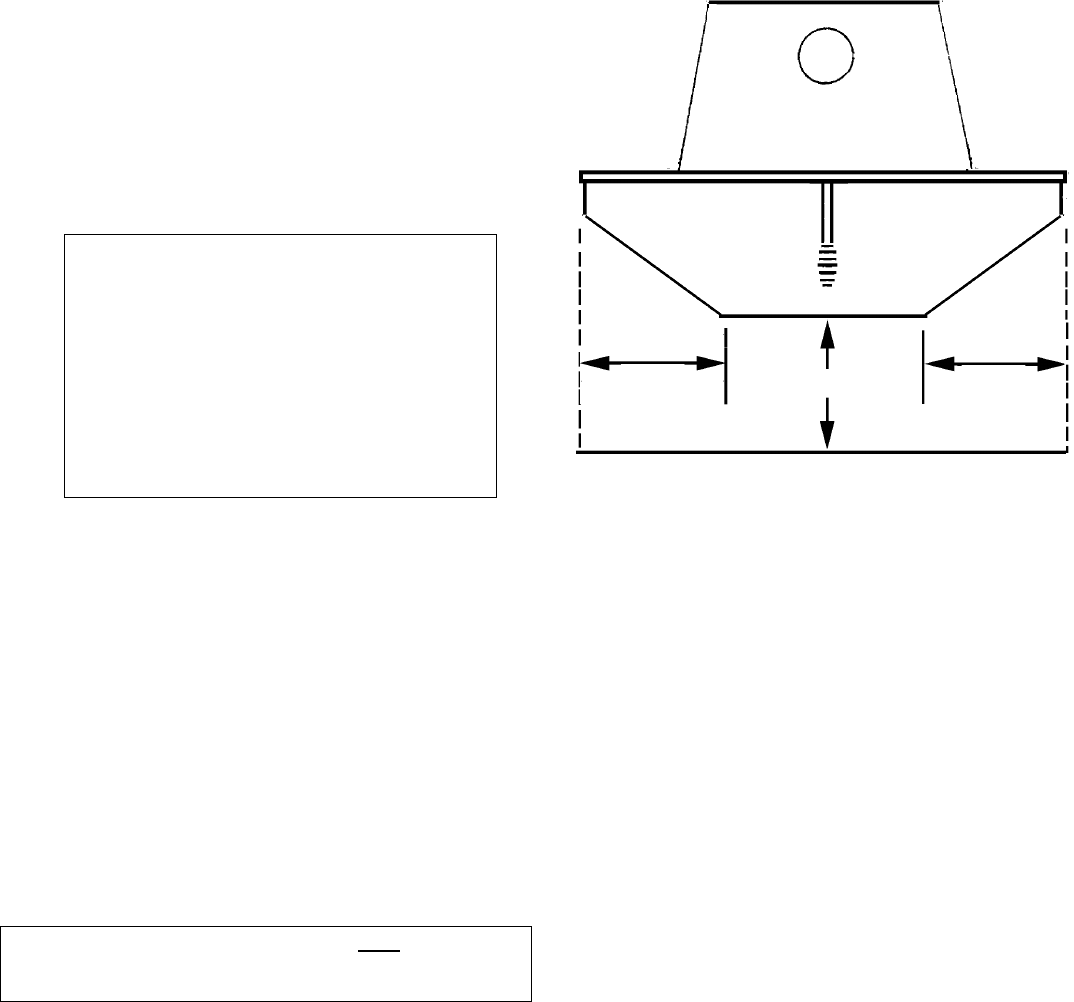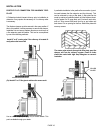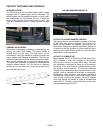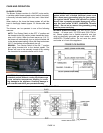
PLANNING YOUR INSTALLATION
PAGE 4
QUESTIONS TO ASK LOCAL BUILDING OFFICIAL
A correct installation is critical and imperative for reduc-
ing fire hazards and perilous conditions that can arise
when wood burning appliances are improperly installed.
The installer must follow all of the manufacturers’ instruc-
tions.
The installation of a wood burning appliance must con-
form to local codes and applicable state and federal re-
quirements. Familiarity with these requirements before
installation is essential. Important considerations to dis-
cuss with local building officials include:
1. Applicable codes (i.e. Uniform Mechanical Code,
State or Regional Codes.)
Electrical codes: The blower system has a flexible
electrical cord that must be electrically grounded
per local codes or per electrical codes:
In USA, NEC, ANSI/NFPA 70-2002.
In Canada, CSA C22.1
WARNING: ELECTRICAL GROUNDING
INSTRUCTIONS: THIS APPLIANCE IS
EQUIPPED WITH A THREE-PRONG
(GROUNDING) PLUG FOR YOUR PRO-
TECTION AGAINST SHOCK HAZARD AND
SHOULD BE PLUGGED DIRECTLY INTO A
PROPERLY GROUNDED THREE-PRONG
RECEPTACLE. DO NOT CUT OR REMOVE
THE GROUNDING PRONG FROM THIS
PLUG. DO NOT ROUTE POWER CORD
UNDER OR IN FRONT OF APPLIANCE.
2. Local amendments?
3. Is a permit required - cost?
(You may wish to contact your insurance company to
ask if they require this).
4. Rooms where the installation is not allowed?
SMOKE DETECTORS
Since there are always several potential sources of fire in
any home, we recommend installing smoke detectors. If
possible, install the smoke detector in a hallway adjacent
to the room (to reduce the possibility of occasional false
activation from the heat produced by the fireplace insert).
If your local code requires a smoke detector be installed
within the same room, you must follow the requirements
of your local code. Check with your local building de-
partment for requirements in your area.
IMPORTANT – THIS APPLIANCE IS NOT
APPROVED
FOR INSTALLATION INTO A MANUFACTURED (MO-
BILE) HOME.
FLOOR PROTECTION
This appliance requires a heat resistant non-combustible
approved fireplace hearth or hearth extension. If a hearth
extension is used it must be a 3/8" (minimum) noncom-
bustible material or equivalent. If the floor protection is to
be stone, tile, brick, etc., it must be mortared or grouted
to form a continuous non-combustible.
This protected area must extend a minimum of 18" to the
front of the fuel door opening and 8" beyond both sides
of the fuel door opening
HEARTH PROTECTION
CHIMNEY INSPECTION
The existing fireplace should be inspected by a local fire
marshal or qualified installer for adequate serviceability
prior to installing this appliance.
Factory built fireplace: If any portion of the chimney
system shows signs of structural or mechanical weak-
nesses, such as: cracks, leaky joints, corroded or
warped surfaces. Look for obvious bulges in the lining,
which may indicate the need to replace that section
(use a bright flashlight. Any faulty portion must be re-
paired or replaced prior to installing this appliance.
Also, inspect the attic to see that the chimney has
proper clearance to combustible framing members.
Masonry fireplace: The chimney should have no
cracks, loose mortar, other signs of deterioration, or
blockage. Any necessary repairs should be done by a
qualified mason.
If the existing fireplace flue system is dirty or has some
obstruction in it, clean it. A dirty chimney can cause your
insert to smoke when refueling, and can result in a chim-
ney fire. An oversized chimney may result in less than
optimum performance. Installations into a large masonry
chimney may require a liner to improve performance.
8" (203 mm) 8" (203 mm)
18" (457 mm)
TOP VIEW
OF INSERT


















